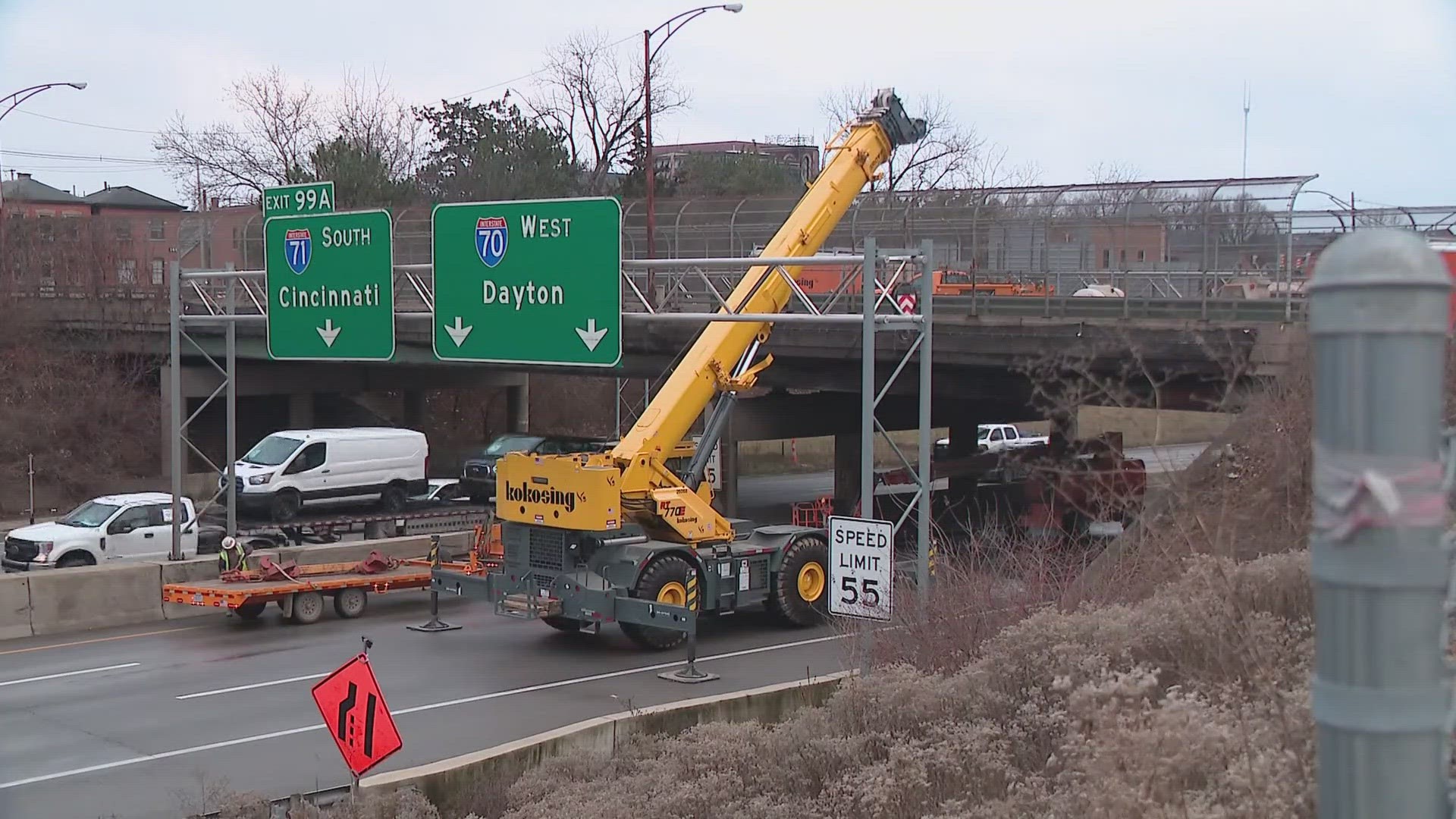COLUMBUS, Ohio — Contractors and Ohio Department of Transportation crews beat the odds and the clock to get a stretch of Interstate 70 reopened in time for Monday morning traffic. A portion of the interstate was closed after a semitrailer hauling a piece of construction equipment hit the bottom of the Fourth Street bridge.
Initial estimates were that the bridge could be closed for days, but it only ended up being closed for about 24 hours.
“There were a lot of stars that needed to align and did. Sometimes I say it’s better to be lucky than good and this time we were lucky and good for this particular event,” said Matt Bruning, ODOT spokesman.
He said all the moving parts happened to be in the right place. Kokosing Construction was working on a nearby project with the needed equipment and a beam from the recently demolished Front Street bridge was still available to shore up the damaged Fourth Street bridge.
Bruning said the damage done to the Fourth Street bridge wasn’t related to it’s age or any structural problems.
“If it had been a brand new bridge getting hit in that manner, I’m sure there would have been some substantial damage to that bridge. The structural condition of that bridge wasn’t a factor. It was getting hit with a large piece of equipment that shouldn’t have been driving under it,” he said.
ODOT crews also looked at bridges along the truck driver’s path to determine if any others were hit.
What about the state’s other bridges? What kind of inspection process do they go through? Ohio inspects most bridges on a yearly schedule, while federal law only requires once every two years.
“We don’t want a bridge to be in a situation where we have to shut it down because of condition. We want to catch it before it gets to that point,” Bruning said. “All of our folks drive over these bridges. Our families drive over these bridges. It’s important for us that these bridges are safe, not just for our families, but for everyone as well. It’s personal for us.”
Every year the Federal Highway Administration publishes the National Bridge Inventory, a report on what states need the most attention when it comes to bridge safety.
In the 2023 report, Ohio ranked 38 out of 52 (report includes Washington D.C. and Puerto Rico) with 5% of the state’s bridges being deemed structurally deficient. Neighboring West Virginia comes in at number one with 20% of the state’s bridges being structurally deficient. Iowa is a close second at 19%.
Ohio has the second largest number of bridges in the country, following Texas. The FHWA report said of the 26,960 reported bridges, 3,183 were in need of some sort of repairs and 1,251 were structurally deficient.
Bruning said many times those bridges falling into the latter category are already being addressed.
“A lot of times as we see those bridge ratings come down, we’re started to program that bridge into a program where we’re going to make a major overhaul to repair it or replace it,” he said.
One example is the I-70 bridge crossing the Scioto River. It sees more than 61,000 crossings daily. Built in 1975, it’s time for an update. While it’s classified at structurally deficient in the 2023 report, that bridge is already in the works of being replaced by ODOT, something that can be seen by the ongoing construction in the area.
What about bridges with the nets catches concrete that breaks off? Most of that concrete is cosmetic and the structural concrete is deep inside, said Bruning.
“The structure of the bridge is supported inside the rebar inside of that concrete. And the concrete on the outside of that rebar, it protects the rebar and the concrete inside. When you see that spalling off, you want to catch it, but it doesn’t mean the bridge is in danger of some kind of an issue.,” he said.
The state also provides funding and assistance to municipalities, townships and counties to repair and replace bridges which fall under those jurisdictions. One such program is the Municipal Bridge Program.

